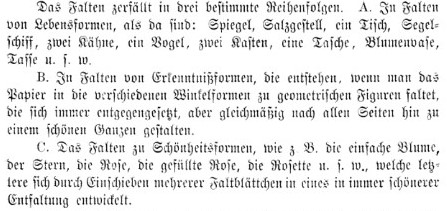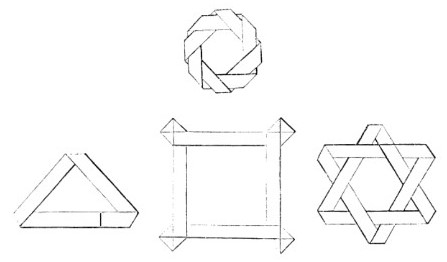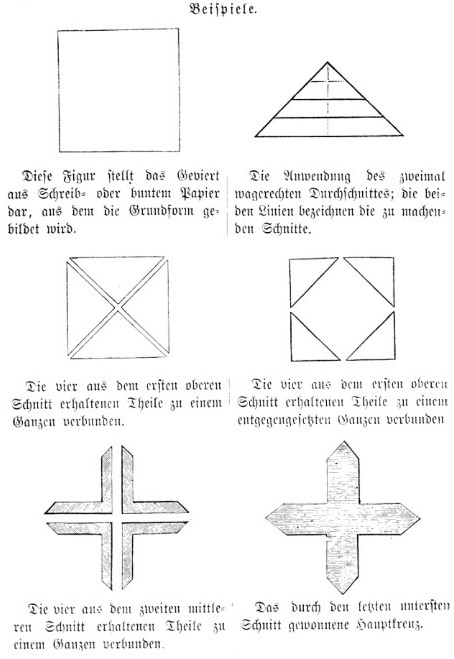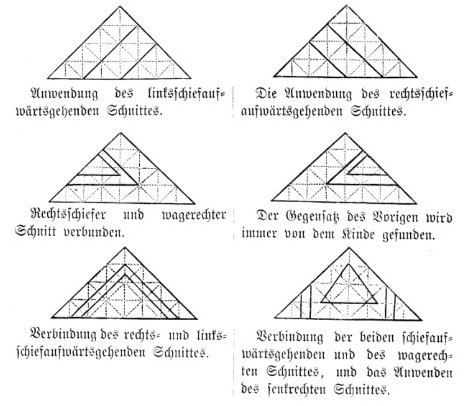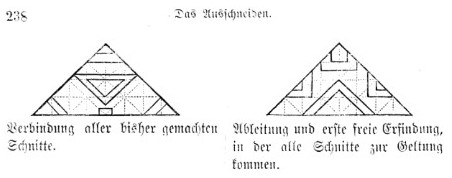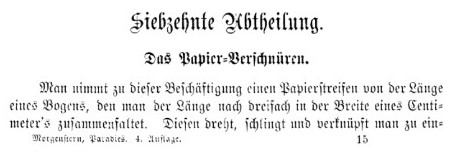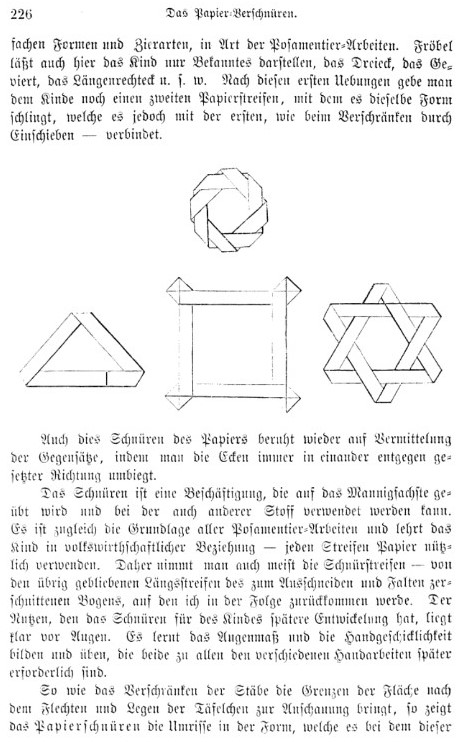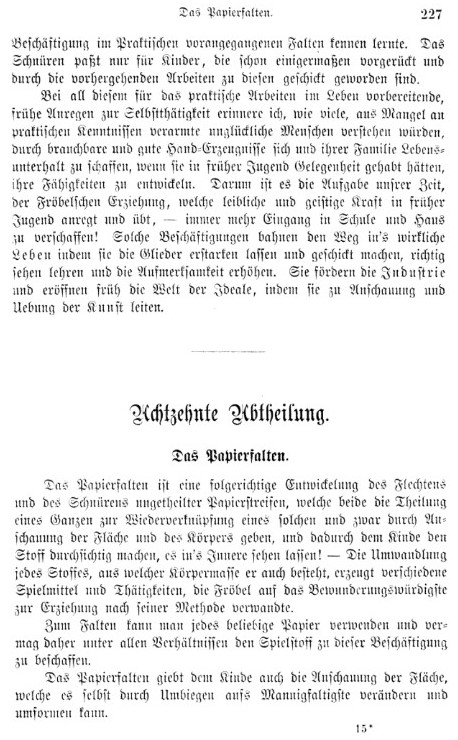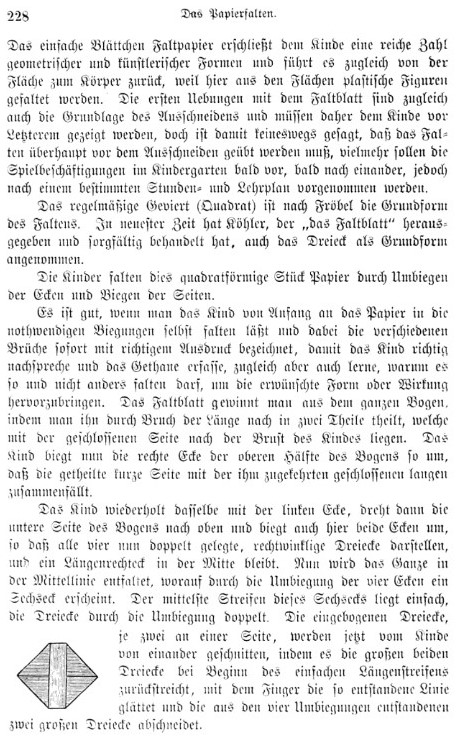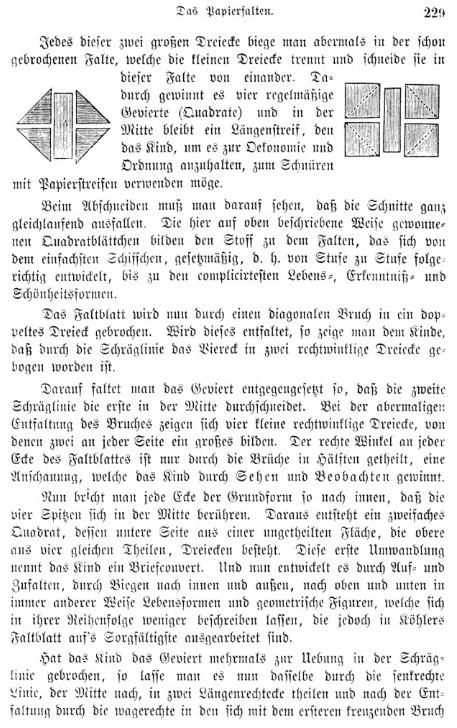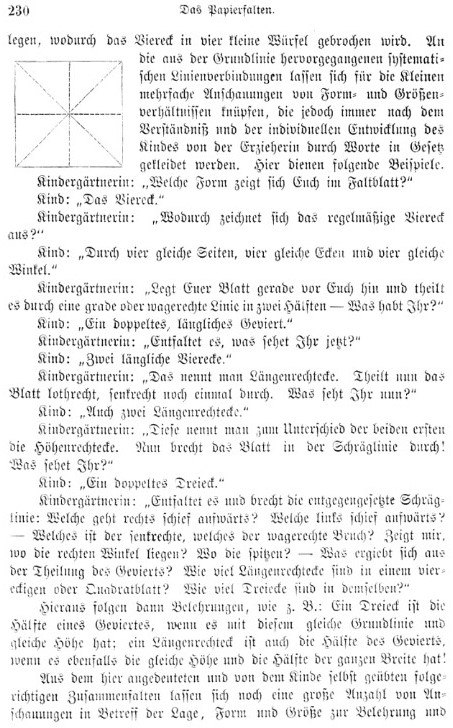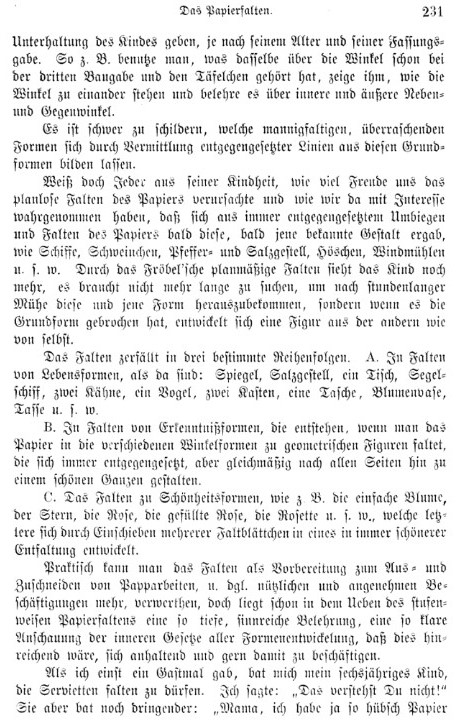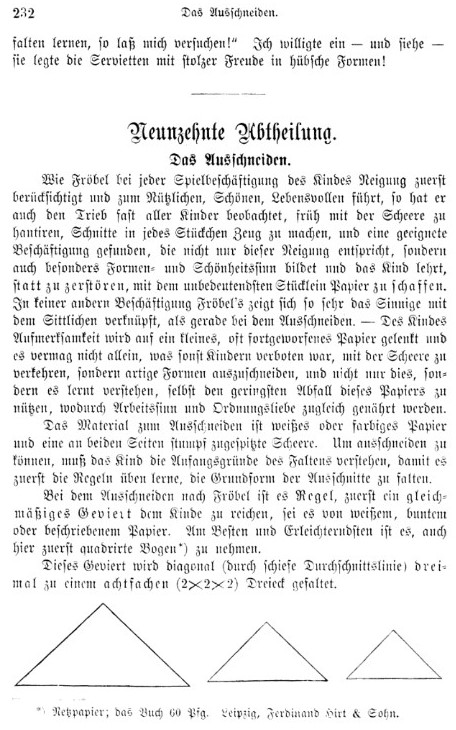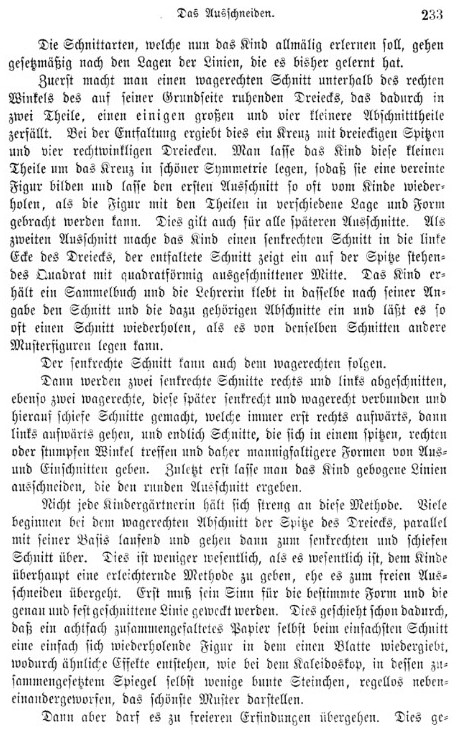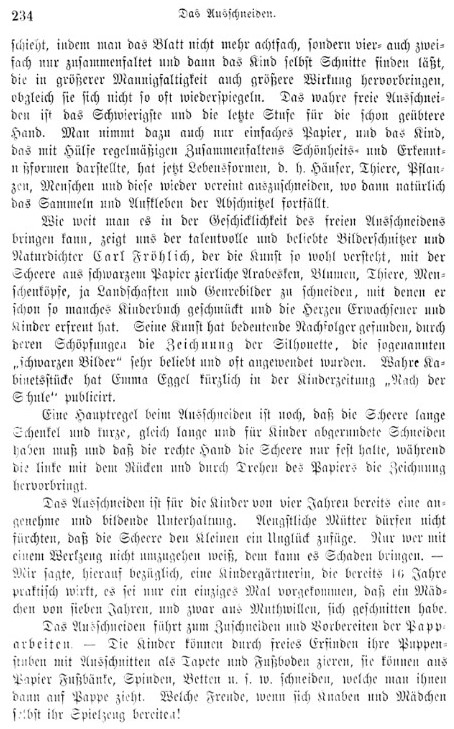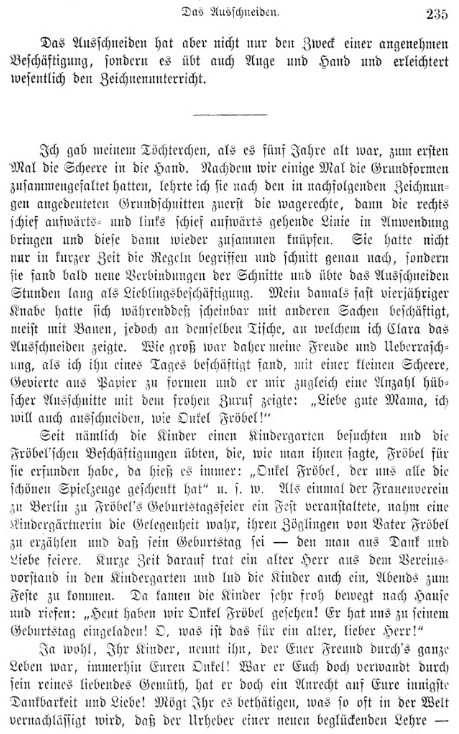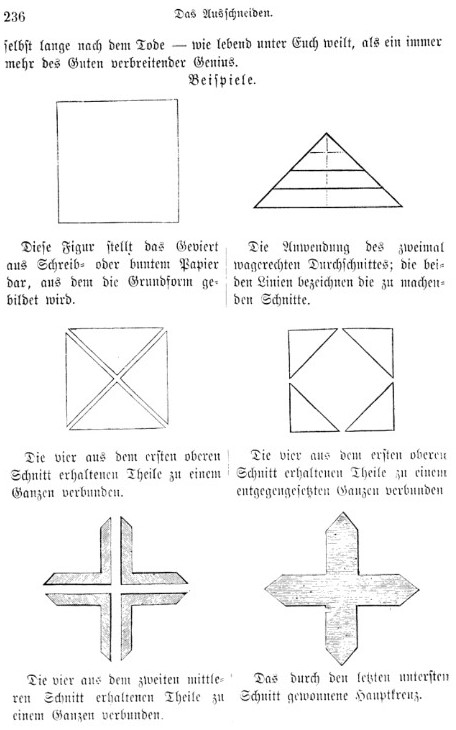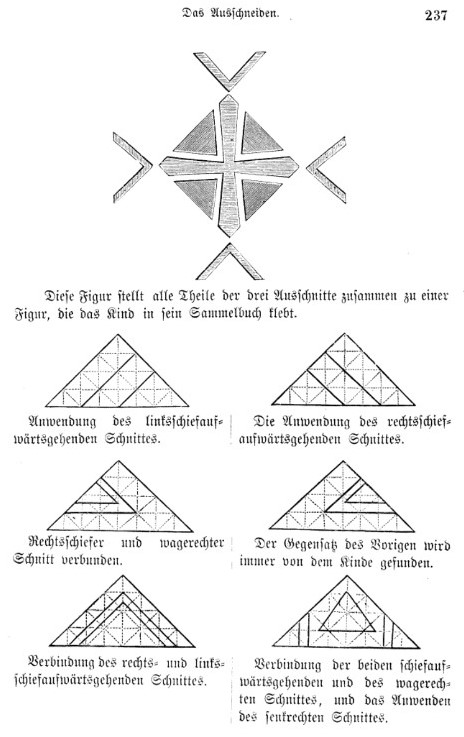| The Public Paperfolding History Project
x |
|||||||
| Das Paradies der Kindheit by Lina Morgenstern, 1861 | |||||||
| 'Das
Paradies der Kindheit' (The Paradise of Childhood) by
Lina Morgenstern was published in Leipzig in 1861. I have not been able to access a copy of the first edition. The information on this page is drawn from the 1878 fourth edition, which is the earliest I can find. The introduction to this edition states, roughly, 'This new edition ... offers some new things, such as the mathematical basis of the Froebel games, some new kindergarten songs and some new movement games. The ball games are of particular value since those by Froebel, composed by Kohl, have long been out of print.'
It seems, therefore, that the paperfolding content was unchanged from the third edition. I strongly suspect from the nature of the material that it is also unchanged from the first edition and I have proceeded on this assumption. If you have access to a first edition and know this is not the case please let me know. There is one apparent anomaly. In the paragraph shown below the author mentions Koehler's 'Das Faltblatt'. If this is a reference to 'Das Frobel'sche Faltblatt', which was, I believe, first published in 1862, this would seem to be be an interpolation into the original text.
A full copy of the 1878 fourth edition can be accessed online here. The source pages relating to paperfolding are given at the foot of this page. This book is in German and set in Fractur. I do not speak German and Google Lens does not transcribe or translate Fractur well. Consequently, it is probable that there will be errors and omissions on this page. If anyone can supply corrections or further information to me I will be most grateful. ********** Analysis Das Papierfalten (The Paperfolding) This section gives a general introduction to the purpose of paperfolding in Froebel's schemaand explains Froebel's method of cutting four squares from a rectangle
The author divides Der Papierfalten into three categories:
Category A: 'Lebensformen' or 'Forms of Life', listed as, roughly, 'Mirror, Salt Dish, a Table, Sailing Ship, two Barges, a Bird, two Boxes, a Bag, Flower Vase, Cup etc. There are no illustrations of these forms. Category B: 'Erkenntnissformen' or 'Learning Forms / Forms of Knowledge', ie, roughly, those 'which arise when the square paper is folded into various shapes to form geometrical figures'. Category C: 'Schonheitsformen' or 'Forms of Beauty', listed as, roughly, 'the Simple Flower, the Star, the Rose, the Filled Rose, the Rosette etc.' Unfortunately there are no illustrations to allow us to determine what the various forms listed here look like. These categories are not specific to paperfolding alone. ********** Das Papier Verichnuren (The Paper Interlacing) This activity is attributed to Frobel himself.
********** Das Ausschneiden (The Cutting Out) This activity, which is also attributed to Frobel himself, is based on a square that has been folded in half three times to obtain an eight-layered right angle isosceles triangle.
********** The page below show how two cuts made parallel to the long edge can divide the square into nine parts, four right angle isosceles triangles, four quarter crosses and a complete cross.
********** Other illustrations show a variety of ways in which to cut other patterns from the same shape. The result of opening out these patterns is not shown.
********** Source Pages
********** |
|||||||





